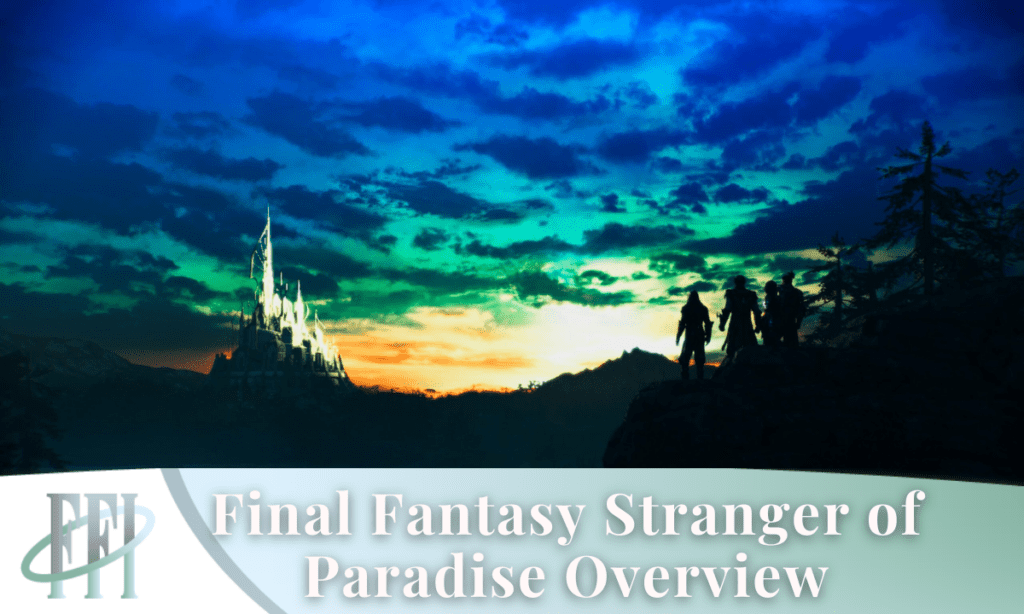- Final Fantasy XVI Curiosities Guide - July 23, 2023
- Final Fantasy XVI The Dame Guide - July 14, 2023
- Final Fantasy XVI Eikon Guide - July 13, 2023
Chaos. Yes, you have probably heard that word uttered countless times if you have been looking for anything regarding Stranger of Paradise. This is because Chaos is the plot’s focal point and has become somewhat of a meme because of the game’s marketing.
But while Stranger of Paradise is essentially based around Chaos, especially the chaotic loot system, the game is incredibly entertaining and one of the most fun Final Fantasy games of recent times. I initially thought Square Enix just wanted to ride the wave of the notorious souls-like genre and grab their slice. Even if that was the case, I’m glad they did.
Final Fantasy is known for mixing fantasy with technology while sprinkling its own universe lore. But at first, Stranger of Paradise blending contemporaneity into the medieval world of the first Final Fantasy made me skeptical. Even so, I was bold and bought the game upon its release.
And here we are, moments later, me with 100% of the game trophies, writing a Final Fantasy Stranger of Paradise Overview to show you all that Jack and his Warriors of Light (or is it?) troupe have to offer to those who want to venture into the quest of hunting and defeating the baddest of them all: Chaos.
World Settings
Stranger of Paradise is set in a world inspired by the first Final Fantasy. While each stage and its events respect the chronology of the classic game, in Origins, they pay homage to the other fifteen main titles of the Final Fantasy series. Each location has its own peculiarity but adds some reference from another game in the franchise.
However, while the first Final Fantasy featured a more colorful and vibrant fantasy setting, Stranger of Paradise opted for a dark fantasy tone. I’m not saying you’ll see decapitated heads or excessive blood every time you murder a Cactuar. But don’t expect a jolly ride and bonding with friends in each new town.
Characters
In Stranger of Paradise we have 5 party members and can take up to 3 into battle. It is only possible to control the protagonist, Jack, while giving simple orders to the others. He’s initially accompanied by two friends who look more like Calvin Klein models than medieval warriors. Then we meet two new members during our journey and search for Chaos.
Jack Garland
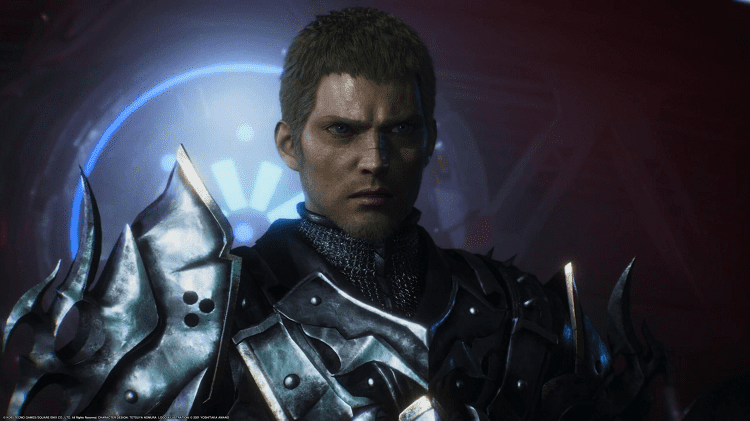
Jack is an intolerant, single-minded man with an irrepressible urge to kill Chaos. While he’s recognized by fellow colleagues as a force to be reckoned with, it’s mostly because we control him and handle the pound. The game doesn’t mind hiding his identity as Garland, his surname.
Players who recognize the name will know what’s coming and wait at every cutscene for Jack to rise into one of the series’ most famous antagonists.
Most impressive than his bloodthirstiness is Jack’s uncanny ability to become an internet meme. Be it for his constant interruptions in cutscenes, his Chaos-filled dialogue, or for owning an iPod in an age when the most common technology was a wood-burning stove.
However, his unorthodox style made him mysteriously charismatic and attracted fans. Perhaps because he represents the rushed gamer, who skips cutscenes and only cares about the action, or because he borders on the ridiculous and turns traditional into ludicrous. Undeniably, Jack has become one of the most iconic protagonists of the franchise.
Ash
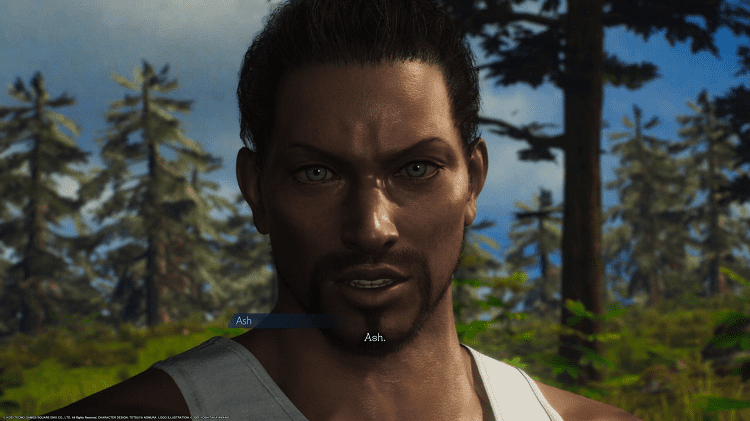
One of the companions that Jack quickly befriends since their goals align is Ash. Just Ash, no last name. He’s a muscular, austere, and patient man who often acts as the voice of reason for the group. Watching him smacking a Tonberry down is one of the game’s greatest pleasures.
Ash respects Jack’s power and puts his faith in him despite their contrasting personalities. In the end, all that matters to Jack is that the Warriors of Light prophecy is fulfilled and Chaos is defeated, no matter how they do it.
Jed
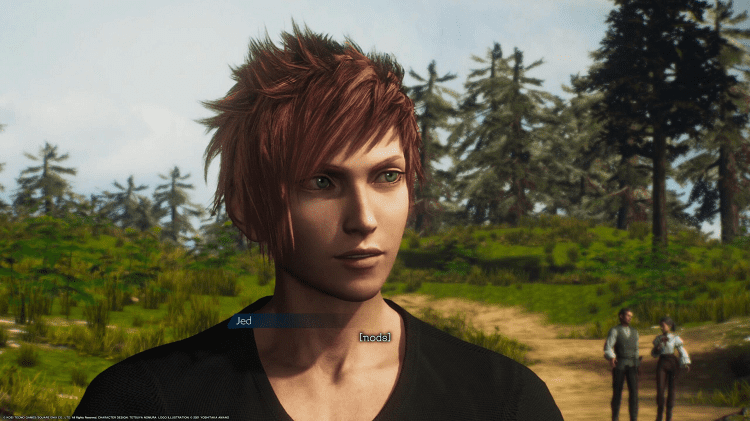
As another party member, Jed also has a dark crystal and seeks to save the world as a Warrior or Light. He meets Jack and Ash outside Cornelia and starts to fare together. Maybe their willingness to work together so fast is a callback to the original Final Fantasy.
Jed is the easygoing and perky character of the turn. He respects Jack for his enormous power to the point of making him question his own usefulnesses. His banter is usually that of a curious puppy strolling with his owners.
While Jack is straightforwardly direct in his actions and goals, neglecting his origins and forgetful memories, Jed begins to ramble and want to know more about them, creating discomfort in the protagonist but adding conflict to the plot. Jack is the drive, Ash is the reason, and Jed is the party’s emotional side.
Neon

During the adventure, we meet Neon, who claims to be Cornelia’s native, unlike the other three who popped from thin air. The girl doesn’t believe Chaos exists, assuming it’s just a dark fairy tale to scare the world. To really prove her point, she tries to become evil hoping someone will defeat her, thus ending the legend. However, the outcome is different from what she aimed for.
Alongside Jack, her resolve is proving to the man that Chaos is a myth while assiduously arguing with the foolhardy protagonist. Neon resembles a high school student who knows how to kick ass way too well for her own good but fails to respect her seniors.
Sophia

Last but not least, we have Sophia, a mature woman with a velvety voice and the last party member to join the misfits. Sophia appears in an extremely random moment, but one that does justice to the game’s plot later. She has little recollection of what’s been happening so far, but not enough to provide the answers the player seeks until then.
She clearly remembers her motivation, defeat Chaos. Since this magic word makes Jack extend an invitation to the VIP group of Chaos-slayers, Sophia joins the company. While I love her personality and the possibility of assuming the Dragoon Job, she doesn’t add much to the plot besides some generic bantering.
Princess Sarah

Sarah is not a playable character, but she is important enough to earn a subtitle and a description. The Princess of Cornelia believes in the potential of the Warriors of Light and vouches for Jack’s crew. She’s first seen playing the lute in Cornelia’s fountain.
When we first meet her, Sarah shares with the party that a knight named Garland ventured into Chaos Shrine and never returned. She is the only one who remembers him, asking our warriors to search for him.
Jack doesn’t know his surname at the moment, which adds to the confusion. At least, I believe he didn’t, or it would be way too weird not to mention anything.
Astos

Originally a dark elf boss in classic Final Fantasy, Astos functions as an enigmatic guide in Stranger of Paradise. He begins to provide information to the Warriors of Light so that they can find the elemental crystals and harness the power to fight Chaos.
However, Astos is actually one of the Lufenians’ spies but ends up becoming a friendly confidant to Jack. The dark elf has long been plotting with Garland a way to free Cornelia and the world from the clutches of the Lufenians without giving away their entire plan.
The Main Story
First of all, I want you to know that Stranger of Paradise: Final Fantasy Origin was designed by Tetsuya Nomura. If the name skips your mind, he is responsible for creating all Kingdom Hearts’ lore.
While it’s a fantastic journey paved by light, darkness, friendship, and key-shaped swords, it’s also famous for being convoluted and covering its plotholes by presenting quasi-unlimited questions without answers for as long as it exists.
That being the case, I knew that theorizing about any eventual narrative was practically useless since Nomura would justify any plot development with something even more absurd that I could come up with, so I just let it be and played the game nonchalantly while admiring the sound effects of a crystallized monster shattering.
The Warriors of Light (?)
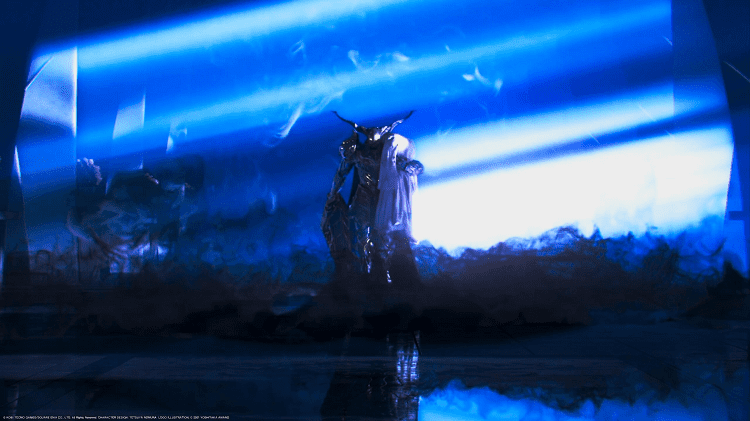
The game starts with a bloody cinematic, showing Garland in his iconic armor killing and dismembering countless guards. The scene ends as he carries someone on his lap like a merchant would have a sack of potatoes.
Then the scene shows Jack, Ash, and Jed getting to know each other and becoming best friends forever faster than you read this sentence. Their dark crystals resonated and brought them together. Right away, you can tell the tone and progression of the story from these few cutscenes. They believe themselves as the prophesied Warriors of Light and decide to team up.
They go to the king of Cornelia and show him their crystals and their intention to defeat Chaos. However, with his regal wisdom, the king doubts their combat prowess. Then, a black screen adorned with white text claims the Warriors went on to defeat a beast, a somewhat lazy way to tell they got acquainted with each other without showing.
However, Minister Lagone is still wary. After all, Lukahn’s prophecy says that there are four Warriors of Light, and they are only three. But after compelling arguments where Jack claims his dream is to kill Chaos, and Princess Sarah’s vouching, the king allows them to enter the Chaos Shrine and hunt for their archenemy.
Looking for Chaos in his Shrine
There is a lot of banter between the party members during the game, which helps to flesh out each one’s personality and situate the events more. Of course, it’s mainly Jack grumbling about something and screaming Chaos all over the place. Still, it’s better than radio silence.
At the end of the Shrine, we meet a famous knight of the series, Garland. The first dialogue exchange between him and Jack is a tad confusing, so they decide to argue with their fists.
Upon defeating him, the mess doubles as Garland transforms into Neon. The girl says she is also a Warrior of Light but, after all her adventures, doesn’t believe Chaos exists. She assumed the mantle of evil, hoping someone would defeat her and end this wicked legend.
Jack’s following words express well my feeling at the instant. He utters a resounding “bullshit” as he puts on his earphones and leaves the throne room to the sound of Limp Bizkit. Suddenly, I threw all my expectations out the window and simply enjoyed the game’s combat, which was extremely fast and amusing.
Traversing Through Final Fantasies
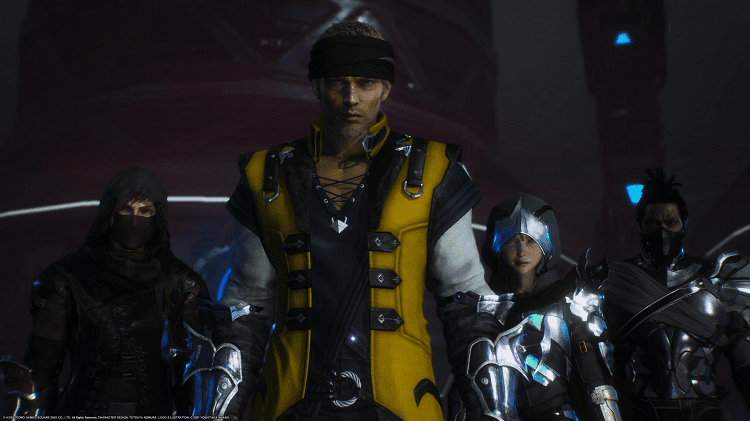
The now three Warriors of Light turned four with Neon, completing a checkmark in Lukahn’s prophecy. The four have to go about collecting clues as to the whereabouts of Chaos, clearing numerous dungeons inspired by the classic Final Fantasy but with a dose of similarity to the other entries in the franchise.
Eventually, Jack and the troupe discover that they need to restore the elemental crystals and begin to take on the Fiends. They also encounter the dark elf Astos, who cryptically guides them, clearly hiding his ulterior motives. With each new dungeon, the more the Warriors are reminded of their past, and the more Jack scolds them for mentioning it.
The Five Warriors of Light
While restoring the Wind Crystal, the group encounters Sophia, another Warrior of Light. Her appearance raises some questions in the group, after all, the prophecy highlights only four of them, and now there’s a five. An impostor among us? But of course, we get no answers.
That is until we get to the Water Crystal. There, Neon remembers a critical point from her past. She is not technically a Warrior of Light. Neon is a native of Cornelia and received her dark crystal from Astos, which explains the excess of heroes.
Even though the party inquires and seeks answers to Neon’s revelation, Jack doesn’t care. He says their role is not to question or discover the past but to hunt Chaos. Any digression would only be an obstacle in their bloodthirsty and belligerent goal.
A Strange Narrative
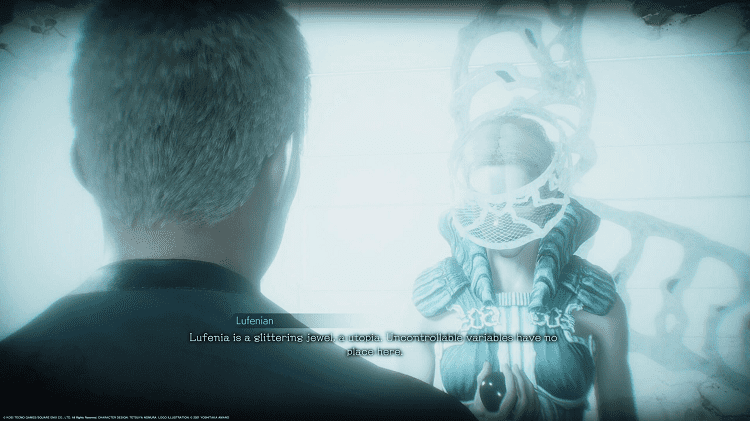
Although Stranger of Paradise does not feature traditional maps or city navigation, it is interesting to note that with each return to Cornelia to talk to NPCs, the environment is gradually consumed by darkness. It is an omen of what is to come, however farfetched its final explanation may be.
With all the crystals restored, the darkness takes over Cornelia almost wholly. The citizens condemn Jack and his party as soldiers of Chaos a while before the city falls in despair as its people turn into monsters.
When our friends question Astos’s true role, he claims to be an agent sent by the Lufenians, a highly technological race. In the original Final Fantasy, it was a race that lived in the sky before being ravaged by Tiamat. Cid, the airship inventor, was said to be a Lufenian.
But in Stranger of Paradise, their role is different. In a kind of Big Brother setting, the Lufenians watched the balance of darkness and light in Cornelia. If the darkness began to weigh in the balance, they sent Strangers, our characters, to minimize the element. If they failed in their mission, the Lufenians reset the world.
Jack, Ash, Jed, and Sofia were sent on this mission several times, and their memories were erased with each deployment. Tired of being manipulated by the Lufenians, they strategize with Astos, Sarah, and, theoretically, Neon to escape from the Lufenians’ grasp and their reset. That’s why some of them had flashbacks peeks throughout the game.
In a significant act of sacrifice, Jack’s colleagues attack him, prompting self-defense from the protagonist and the death of them all. This causes the darkness accumulated in them to transfer to Jack, who grows in power enough to break the fabric separating Cornelia and Lufenia.
There, Jack faces the Darkness Manifest and, victorious, becomes Chaos itself. The Lufenians, afraid that Jack’s Chaos power will start to interfere with their reality, sever the connection between Cornelia, freeing the world from the race’s control.
The Rise of the True Warriors of Light
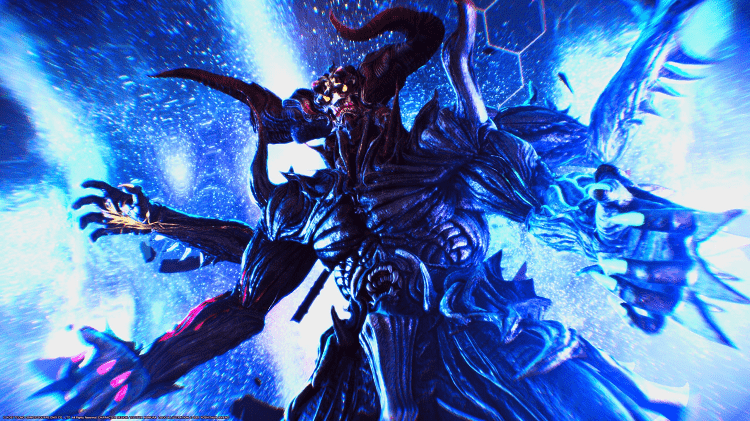
In the end, the game tries to force a connection to Final Fantasy I. I believe they may have stretched the narrative too thin for this. Jack thinks that if he becomes a significant enough threat to Cornelia, it will cause the true Warriors of Light to rise up to the challenge.
When they do so, the world will no longer depend on the protection of the Lufenians. I mean, were the Lufenian not scared enough by Jack? Why would they need bonafide knights to protect the world? If you think hard enough, you won’t be pleased. So I suggest you do it like me: don’t think, just enjoy the ride.
That’s how Stranger of Paradise sets the journey of Jack Garland, who goes back 2,000 years, meets up with all his four party members – now known as the Four Fiends – and awaits the rise of the Warrior of Light.
Stranger of Paradise & DLCs
Stranger of Paradise has 3 DLCs that build up the original narrative, further exploiting Jack’s adventures and his attempt to become a villain for the greater good.
Trials of the Dragon King
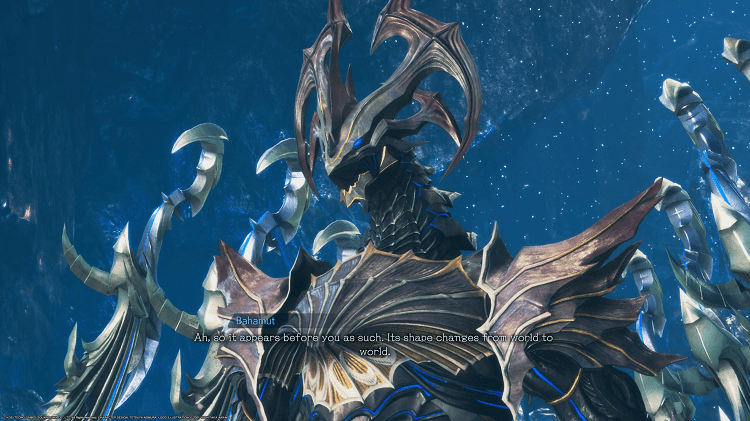
Interestingly, when the Warriors of Light first appear, the heroic protagonist is a boss in the first DLC. It’s up to us players to beat the crap out of him. But by doing so, we are technically preventing the plot of Final Fantasy I from taking place.
To ensure the timeline will remain intact, Square Enix has come up with that Jack has made a pact with Bahamut so that the dragon king will empower all future versions of the Warrior of Light so that one day the hero will overpower the villain.
The DLC is interesting for adding new combat, Jobs, levels, and equipment. But in terms of narrative, it just makes things harder to swallow. Keep overlooking the plot and enjoying the game’s combat, and you will have fun.
Wanderer of the Rift
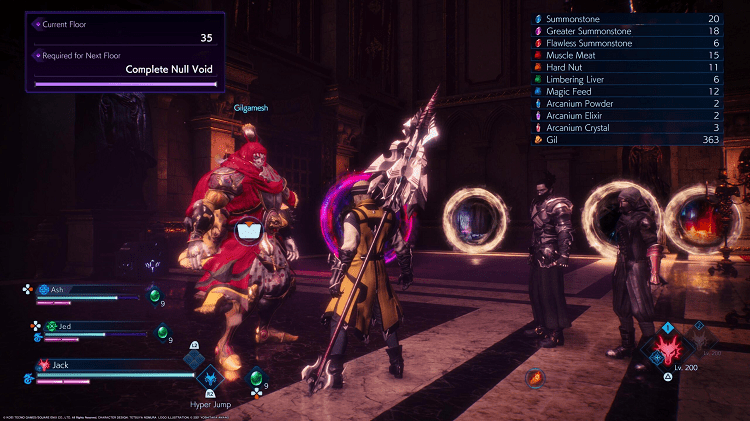
The second DLC introduces a fan-favorite character, Gilgamesh. Gilgamesh is known as a dimensional traveler, so his arrival can be explained. The samurai’s appearance threatens Jack’s plans, so he decides to deal with him before things get out of hand.
Compared to the first DLC, Wanderer of the Rift plot is even more low-key. It provides longevity to the game by offering even more Job levels, equipment, and random-generated dungeons. When we face Gilgamesh, a cutscene plays out, fleshing out the story.
According to Gilgamesh, the dimensions are unraveling and will swallow Jack’s world in the future if left unchecked. What’s that supposed to mean, you ask? I’ve no clue whatsoever. It sounds like generic explanations with difficult words someone gives us when they have no clue about the subject.
Different Future
Maybe The Wanderer of the Rift DLC was preparing the ground for the Different Future. Nomura said the last DLC will be something totally unexpected. In this expansion, Jack and the gang are guided by a Moogle to a city in an alternate time and space, which may justify all the dimensions that popped up with Gilgamesh.
According to Moogle, the Lufenians are trying to erase Jack’s dimension from existence. It’s up to the protagonist, with the power of Chaos, to stop this. The DLC comes with the usual additions, such as levels, a new Job, and bosses.
Furthermore, eagle-eyed fans spotted that the Different Future logo resembles the original Final Fantasy II logo. This information corroborates the appearance of a mysterious enemy, which I believe, after close analysis of the golden stiletto high heels, to be Mateus, the Emperor and the main antagonist from the second game.
Battle System
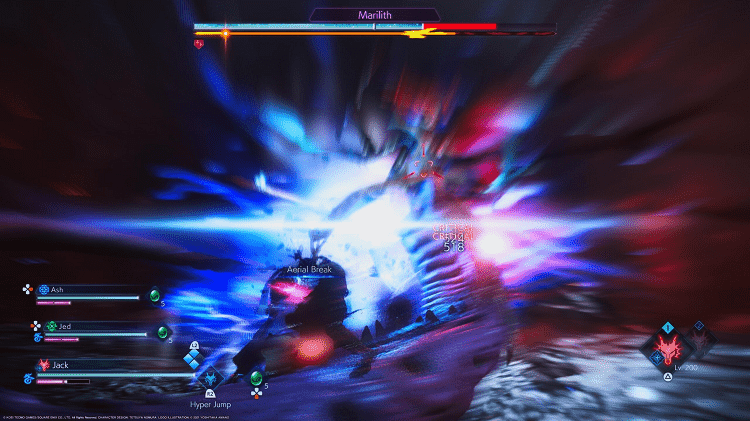
If I say souslike, would you know what I am talking about? And if I call it Nioh-like, would it make it even easier? Because that is what Stranger of Paradise is called, but with a dash of Final Fantasy elements and systems.
The combat in Stranger of Paradise is fast-paced, brutal, and with a small margin for error. The only thing that separates it from Soulslike is the fact that Jack has no stamina to dodge or attack. Alternatively, there is the Break Gauge that depletes whenever guarding against enemy attacks or using Soul Shield, a type of parry.
Enemies also have a Break Gauge which functions as a second HP bar. When this gauge reaches zero, Jack can use a finisher, crystallizing the enemy and increasing his MP bar. When we start out, we only have two MP bars, which we consume through weapons or job skills. MP is restored by smacking enemies down.
Trademarks Jobs from Final Fantasy are present in Stranger of Paradise. Jack can equip up to two and swap between them at any time. Each Job has specific abilities and a skill tree. However, what diversifies Jack’s abilities are weapons. For example, a Dragoon can equip a Greatsword, which allows him to use Greatsword’s abilities, but prevents him from using Spears abilities. I think using Dragoon with any weapon other than his iconic spear denotes a character flaw in your personality.
Jobs are separated into basic, advanced, and expert. To unlock more powerful Jobs you must spend points on their basic form. The amount of builds one can make shifting Jobs and their skills creates a spectacular dynamism in the gameplay of Stranger of Paradise.
The party members act independently and can turn into some of the Jobs available. We can change their equipment, but not their abilities. Even though they are AI-controlled, the party is slightly competent. We can command them to unleash abilities from their Jobs, aligning them with our own and thrashing our foes quickly.
Picking the Right Job for the Work
Since each weapon dictates most of Jack’s skills, choosing a Job becomes more personal than strategic. Granted, Experts give more attribute bonuses at higher levels. However, depending on your playing difficulty, different strategies for monsters and bosses are necessary. Mages, for example, are perfect for casting at long range while their party members gobble up enemy damage.
|
Basic Jobs |
Advanced Jobs |
Expert Jobs |
|
|
Base Game |
Swordsman Duelist Pugilist Mage Lancer Swordfighter Ronin Marauder |
Warrior Knight Thief Monk White Mage Black Mage Red Mage Dragoon Berserker Samurai |
Breaker Void Knight Tyrant Sage Dark Knight Paladin Ninja Assassin Liberator Cyclic Warrior |
|
Trials of the Dragon King |
Pilgrim |
Evoker |
Summoner |
|
Wanderer of the Rift |
|
Blue Mage | |
|
Different Future |
|
Marksman
Hunter Gambler |
Point-and-Click World Map

Stranger of Paradise presents a symbolic world map. They are just points where we click to select a mission and enter it. Each mission shows its rewards and objective before joining it. You can also opt to join a multiplayer session or open one yourself. Playing Strange of Paradise with other players is incredibly amusing, and I highly recommend it.
I have long missed a navigable overworld map (an addendum, Harvestella has gone back to its origins and included an overworld map!). Those with click-and-select navigation seem more like lazy designs.
To talk to NPCs, you have to select a specific location, such as Cornelia. It’s a very disposable experience and adds almost nothing to the game except for the dialogs with Bahamut necessary to proceed with your DLC.
FAQs
Question: What is Stranger of Paradise an origin of?
Answer: It’s the origin of Jack Garland, Final Fantasy I’s first villain, and how technically he plotted the rise of the Warriors of Light. The title can also be related to the game being a prequel to the first one, chronically making it the franchise’s origin.
Question: Is Stranger of Paradise: Final Fantasy Origin a remake?
Answer: No. It’s an original spinoff game from Final Fantasy that borrows the franchise’s first game story and builds upon it. Honestly, I’m not sure if the game will be considered canonically in future years. It could be or couldn’t since it won’t expressively change anything down the road.
Question: Is Stranger of Paradise: Final Fantasy Origin like Nioh?
Answer: Yes! It was developed in collaboration with Team Ninja, the developer of Nioh, so its gameplay similarities are no coincidence.
Conclusion
I consider Stranger of Paradise: Final Fantasy Origin a wildcard within the franchise. If you, like me, admire Final Fantasy for its storytelling ability, memorable characters, and concise and engaging world-building, perhaps Stranger of Paradise won’t meet your standards.
However, this does not mean that it is a bad game. I found it to be extremely fun and replayable, particularly if you enjoy experimenting with different builds and pushing your power to the extreme so that you can kill bosses with a few attacks.
I stand in the middle of the road. The game has a flawed story, but I appreciate its entertaining and engaging gameplay. This is probably why I have collected all the trophies in Stranger of Paradise, including the DLCs, and I intend to continue to do so if more DLCs are released. However, until that happens, it’s a game that will adorn my shelf alongside other less memorable Final Fantasy spinoffs.

